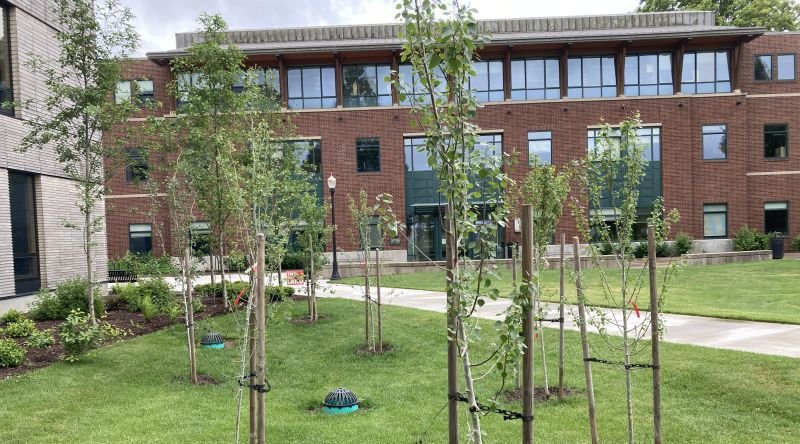
Back in late April, OSU Research Forests had the exciting opportunity to plant native pacific aspens along the 600 road in the Oak Creek area of the McDonald Forest, as well as at the Marchel Tract near the Willamette River. Several were also planted near the new Peavy building on campus at OSU. College of Forestry Professor Steve Strauss and others used DNA sequencing to show that the aspens in the Willamette Valley, and nearby Washington and British Columbia, belong to a distinctive variety that grows in wet areas in the lowland Pacific. These types of areas were likely to be more abundant prior to the draining and leveling of the Willamette Valley for agriculture.
The DNA studies showed that these trees are clearly distinct from aspen in the Cascades, the Rocky Mountains, and the eastern USA and Canada. Strauss and others published these findings last year in the journal Ecology and Evolution. The authors inferred that the likely origin of this aspen was in an ice-free Pacific refugium during the last ice age.
Through a collaboration with the wholesale tree nursery, J Frank Schmidt & Son, the Strauss team’s aspen collections are currently being tested for release as a native variety. The trees planted on campus and on the Research Forests were mostly the result of samples taken by CoF staff member Anna Magnuson (supported by grant funds from Schmidt). The plantings include native trees from as close by as Peoria and the Calapooia River near Corvallis, Killen Marsh near Banks, and the Nature Conservancy’s Camassia Natural Area close to East Linn. Several other Willamette Valley origins are also represented in the plantings.
These aspens will be studied as they grow to see if they are better adapted to local conditions than the mountain aspens that are now commonly planted. J Frank Schmidt & Son plans to have them ready for distribution in a few years. Hopefully this beautiful looking, beautiful sounding, and formerly common tree in the Valley becomes more widely enjoyed by everyone. Educational materials will be installed near some of the trees once they become established.
The OSU College of Forestry’s Research Forests include network of ten forest tracts spread throughout Oregon, totaling 15,000 acres. Subscribe to their newsletter to receive monthly newsletters as well as trail updates.

